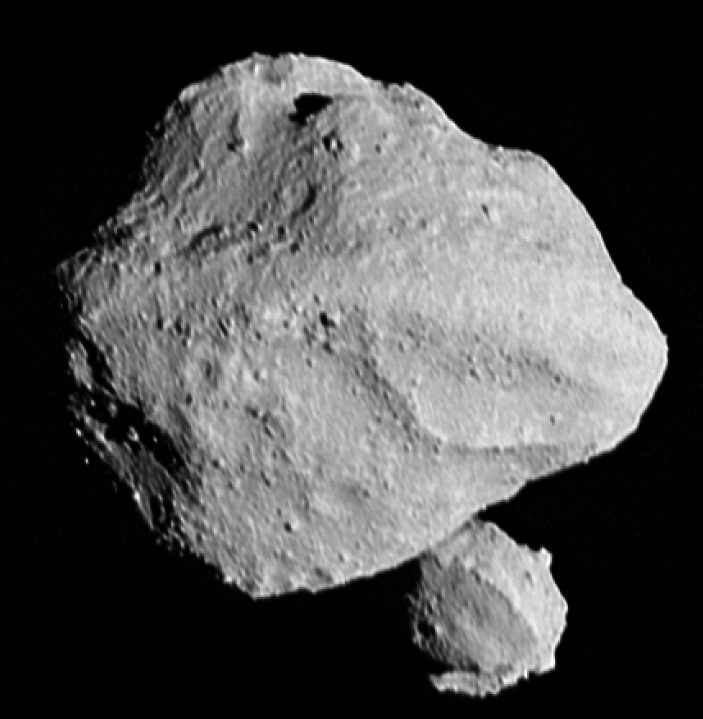When NASA’s Lucy mission flew past asteroid Dinkinesh on November 1, 2023, it made the surprising discovery the asteroid had a tiny moon. Then came another surprise. This wasn’t just any moon, but a contact binary moon, where two space rocks are gently resting against each other. Of course, this new and unique moon needed a name, so the International Astronomical Union (IAU) has just approved approved “Selam,” which means peace in Ethiopia’s language.
But, everything’s connected here. Dinkinesh is the Ethiopian name for the Lucy fossil, and Selam is named after another fossil from the same species of human ancestor.
The Lucy mission is named after the hominid skeleton fossil called Lucy that was discovered in Ethiopia in 1974. Lucy (in turn, named after the Beatles song, “Lucy in the Sky With Diamonds) is estimated to be 3.18 million years old. This fossilized human ancestor has provided unique insight into humanity’s evolution. Likewise, the Lucy mission will revolutionize our knowledge of planetary origins and the formation of the Solar System.
The fossil Selam was discovered in 2000 in Dikika, Ethiopia, and belonged to a 3-year-old girl of the same species as Lucy. Even though this fossil is referred to as Lucy’s baby, the “baby” actually lived more than 100,000 years before Lucy.
“It seemed appropriate to name its satellite in honor of another fossil that is sometimes called Lucy’s baby,” said Raphael Marshall of the Observatoire de la Côte d’Azur in Nice, France, who originally identified Dinkinesh as a potential target of the Lucy mission.
The flyby of Dinkinesh served as a test for Lucy’s instruments on its way to the Trojan asteroids, a large group of asteroids that share the same orbit as Jupiter.

This first asteroid encounter for the Lucy mission really surprised everyone. Not only was there the surprise of the previously hidden contact binary, but the surprisingly high-resolution images revealed boulder-strewn surface on both small worlds. Up close, 790 meter-wide Dinkinesh looks a lot like 101955 Bennu, visited by OSIRIS-REx. NASA says that we can expect to see more images of the flyby with additional processing soon, saying that the team has completed downlinking the data from Lucy’s first asteroid encounter and is continuing to process it.
The Dinkinesh encounter was added in January of this year as an in-flight test of the spacecraft’s systems and instruments, and in a recent Lucy blog post by Katherine Kretke of the Southwest Research Institute, she says all systems performed well.
“The tools and techniques refined with data from this encounter will help the team prepare for the mission’s main targets, the never-before-explored Jupiter Trojan asteroids,” Kretke wrote. “In addition to the images taken by Lucy’s high-resolution L’LORRI camera and its Terminal Tracking Cameras (T2Cam), Lucy’s other science instruments also collected data that will help scientists understand these puzzling asteroids.”
The mission plan for Lucy is currently to visit 9 more asteroids over the next decade in 6 separate encounters. After an Earth gravity assist in December 2024, the spacecraft will return to the main asteroid belt where it will encounter asteroid Donaldjohanson in April 2025. Lucy will pass through the main belt and reach the mission’s primary targets, the Jupiter Trojan asteroids, in 2027.

The post The New Asteroid Moon Discovered by Lucy Just Got its Own Name appeared first on Universe Today.
No comments:
Post a Comment